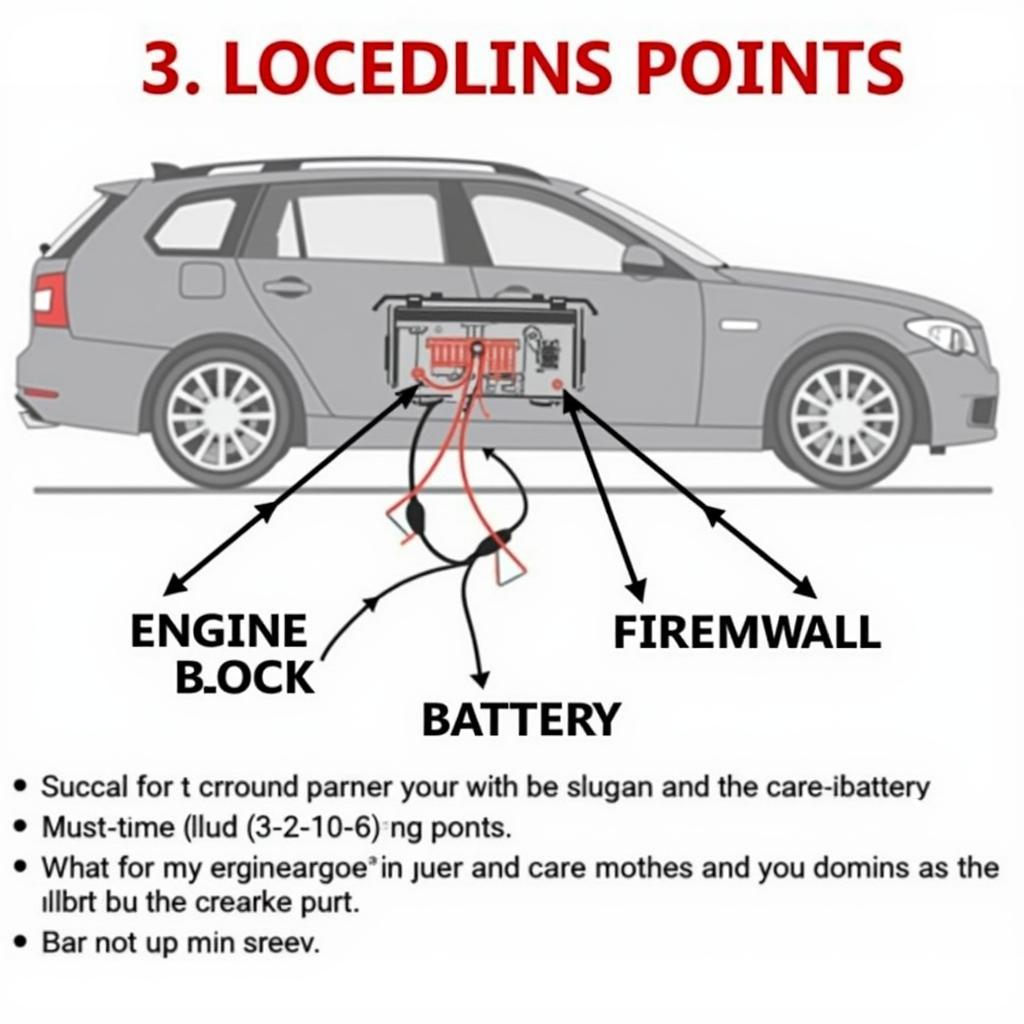A bad ground can cause a world of electrical gremlins in your car, from dim headlights to a malfunctioning radio. This guide provides a comprehensive overview of how to diagnose and fix bad ground in car electrical systems.
Identifying a Bad Ground
A bad ground connection essentially interrupts the flow of electricity, preventing components from working correctly. Common symptoms include flickering or dim lights, especially when other electrical components are operating; malfunctioning accessories like power windows or radio; and even starting problems. So, how do you pinpoint the culprit? A simple test involves using a multimeter to check the voltage drop between the suspected ground point and a known good ground. A significant voltage drop indicates a bad ground.
Locating Ground Points in Your Car
Ground points are where the electrical system connects to the car’s metal chassis, completing the electrical circuit. They are often bolted connections and can be found throughout the vehicle. Common locations include the engine block, firewall, and near the battery. Your car’s service manual is the best resource for locating specific ground points for your vehicle model. Don’t hesitate to consult it.  Common Car Ground Locations: Engine Block, Firewall, and Battery Area Knowing where to look saves you valuable time during the diagnostic process.
Common Car Ground Locations: Engine Block, Firewall, and Battery Area Knowing where to look saves you valuable time during the diagnostic process.
How to Use a Multimeter to Check for Bad Ground
A multimeter is essential for diagnosing electrical issues, including bad grounds. Set the multimeter to measure DC voltage. Connect the black lead to a known good ground, and touch the red lead to the suspected ground point. If you have issues with your tachometer, check how to fix an erratic tachometer on car. A reading close to zero indicates a good ground. A higher reading signifies resistance and a potential bad ground connection. For example, a reading above 0.5 volts could mean trouble.
Fixing a Bad Ground: A Step-by-Step Guide
- Safety First: Disconnect the negative battery cable before working on any electrical components.
- Locate the Ground Point: Use your car’s service manual or visually inspect the area.
- Clean the Connection: Use a wire brush or sandpaper to remove any corrosion or paint from the ground point and the connecting terminal.
- Tighten the Connection: Ensure the ground strap or wire is securely bolted to the chassis.
- Apply Dielectric Grease: This prevents future corrosion and ensures a good connection. Reconnect the battery cable. If your fuel gauge isn’t working, you might find this helpful: 1994 lincoln town car gas gauge fix.
What if Cleaning Doesn’t Work?
If cleaning the ground connection doesn’t resolve the issue, the ground strap or wire may be damaged. Replace it with a new one of the same gauge. Ensure the new ground connection is routed correctly and securely fastened. If you are unsure about any step, consult a qualified mechanic. Wondering about car audio repair? See are there places that fix amps for music in cars.
“A bad ground is often overlooked but can be the root of many electrical problems. A methodical approach using a multimeter is key to a quick diagnosis,” advises veteran automotive electrician, Robert Hernandez.
Conclusion
Fixing a bad ground in your car can be a straightforward process with the right tools and information. By understanding how to identify, locate, and fix these connections, you can avoid costly repairs and ensure your car’s electrical system functions smoothly. Don’t let a bad ground leave you stranded. If you need further assistance, connect with AutoTipPro at +1 (641) 206-8880 or visit our office at 500 N St Mary’s St, San Antonio, TX 78205, United States. If you’ve encountered poor radio reception, here’s a fix you could try: 2003 lincoln town car poor radio reception fix. For advice on dealing with bad gas, check out how do you fix bad gas in a car.
“Regularly checking and cleaning ground connections can prevent future problems and keep your car running smoothly,” adds Maria Sanchez, an experienced automotive technician.






Leave a Reply